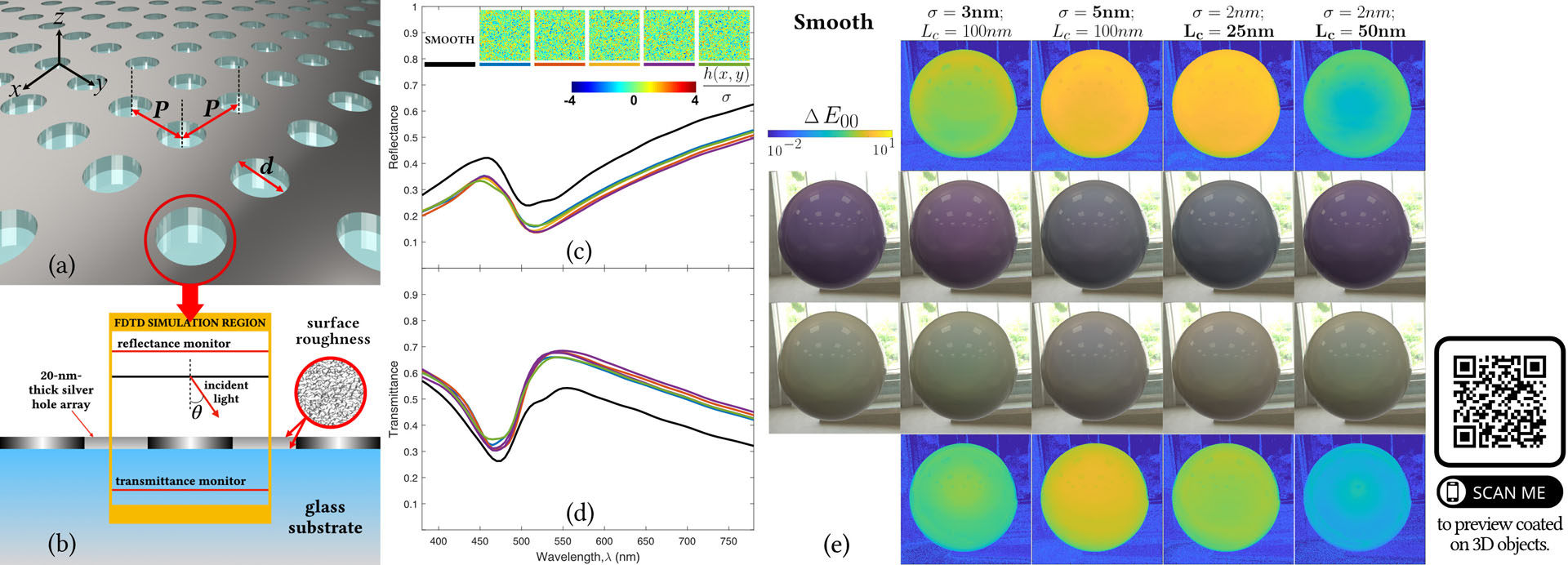“Multi-scale Computational Visualization of Angle-Dependent and Roughness-Sensitive Plasmonic Structural Coloration” by Loi and Chau
Conference:
Type(s):
Title:
- Multi-scale Computational Visualization of Angle-Dependent and Roughness-Sensitive Plasmonic Structural Coloration
Presenter(s)/Author(s):
Entry Number: 46
Abstract:
Structural coloration can be achieved through plasmonic nanostructures tailored on size scales below the wavelength of light. The perceived colors of these structures are highly sensitive to surface geometry and are generally angle- and frequency-dependent [Song et al. 2019]. Fabricated plasmonic nanostructures exhibit roughness which can lead to deviations in its performance compared to those predicted from simulations [Rodríguez-Fernández et al. 2009]. Roughness occurring at nanometer size scales can perturb surface plasmon resonances and, in turn, affect both the far- and near-field electromagnetic field patterns associated with the plasmonic structure[Ge et al. 2018] . Despite considerable progress in coloration technology using plasmonic structures [Lee et al. 2018], there is limited understanding on the impacts of surface roughness on the resulting color produced from plasmonic structures. Physically based rendering (PBR) has enable computational visualization of the visual appearance of complex materials. PBR has been successfully applied to visualize iridescence of Morpho butterfly wings [Musbach et al. 2013], Elaphe snake skin [Dhillon et al. 2014], and soap bubbles [Huang et al. 2020]. State-of-the-art computational visualization cannot be readily applied to investigate structural color from plasmonic nanostructures, as their color is governed by electromagnetic interactions occurring on size scales (10s of nanometers) that cannot be captured by traditional PBR. Adaption of PBR to describe metallic nanostructures requires new scattering models which can model subwavelength interactions and incorporate the effects of roughness. The purpose of this work is to explore a multi-scale computational model that leverages electrodynamic simulations and PBR to physically describe the effect of roughness on the structural coloration arising from plasmonic nanostructures.





